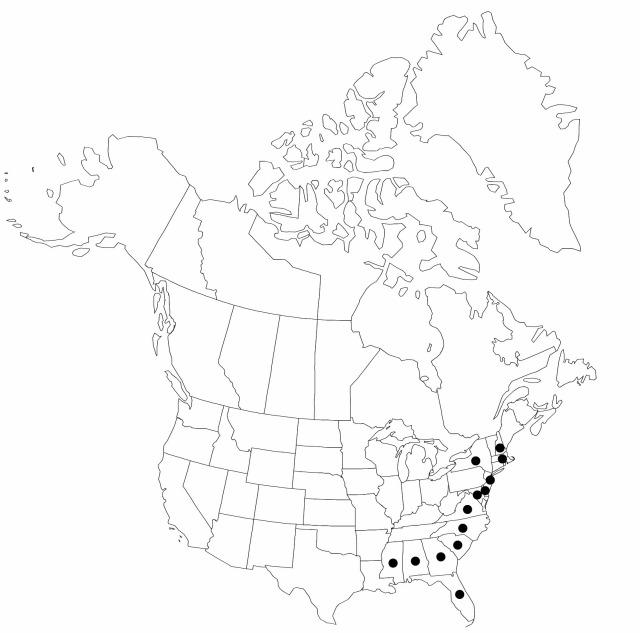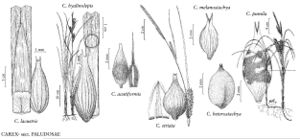Difference between revisions of "Carex striata"
Fl. Bor.-Amer. 2: 174. 1803.
FNA>Volume Importer |
imported>Volume Importer |
||
| (One intermediate revision by the same user not shown) | |||
| Line 6: | Line 6: | ||
|place=2: 174. 1803 | |place=2: 174. 1803 | ||
|year=1803 | |year=1803 | ||
| + | }} | ||
| + | |special_status={{Treatment/ID/Special_status | ||
| + | |code=F | ||
| + | |label=Illustrated | ||
| + | }}{{Treatment/ID/Special_status | ||
| + | |code=E | ||
| + | |label=Endemic | ||
}} | }} | ||
|basionyms= | |basionyms= | ||
| Line 50: | Line 57: | ||
|publication title=Fl. Bor.-Amer. | |publication title=Fl. Bor.-Amer. | ||
|publication year=1803 | |publication year=1803 | ||
| − | |special status= | + | |special status=Illustrated;Endemic |
| − | |source xml=https:// | + | |source xml=https://bitbucket.org/aafc-mbb/fna-data-curation/src/2e0870ddd59836b60bcf96646a41e87ea5a5943a/coarse_grained_fna_xml/V23/V23_916.xml |
|genus=Carex | |genus=Carex | ||
|section=Carex sect. Paludosae | |section=Carex sect. Paludosae | ||
Latest revision as of 20:44, 5 November 2020
Plants colonial; rhizomes long-creeping. Culms central, slender, trigonous, 40–90 cm, smooth, with marcescent remains of previous year’s leaves at base. Leaves: basal sheaths brownish and tattered on fertile culms, reddish purple on youngest culms, apex glabrous; ligules 1.8–12.5 mm; blades green, M-shaped, often ± septate-nodulose, 2.6–5(–6) mm wide, smooth abaxially, glabrous. Inflorescences 9–35(–45) cm; peduncle of terminal spike (2–)3.5–15 cm; rachis beyond the proximal pistillate spikes sharp-angled, finely scabrous; proximal 1–2 spikes pistillate, not or barely overlapping, ascending; distal spikes erect; terminal 1–3 spikes staminate. Pistillate scales lanceolate to ovate, acute to acuminate, sometimes ± smooth-awned to 1.1 mm, glabrous. Perigynia ascending, 14–22-veined, ovoid, 3.9–7 × 2–3.3 mm, glabrous or densely pubescent; beak 0.5–1.3 mm, bidentulate, teeth straight, 0.1–0.6 mm.
Phenology: Fruiting Apr–Jul.
Habitat: Open swamps, sedge meadows, bogs, boggy depressions, in acidic, often peaty soils
Elevation: 0–100 m
Distribution

Ala., Del., Fla., Ga., Md., Mass., Miss., N.H., N.J., N.Y., N.C., S.C., Va.
Discussion
Southward from New Jersey, plants of Carex striata often have increasingly pubescent perigynia; northern, glabrous plants of that cline have been called C. striata var. brevis (A. A. Reznicek and P. M. Catling 1986b).
Exceptionally robust plants of Carex striata with glabrous perigynia may key to C. hyalinolepis, from which they can be distinguished by their broadly ovoid perigynia, smooth-margined pistillate scales, and green leaves.
Selected References
None.
